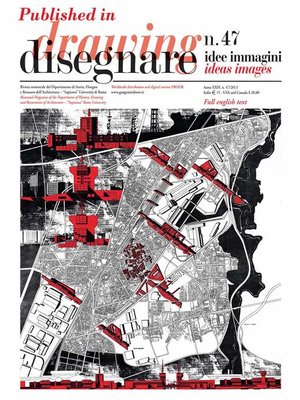Il Rilievo come Sistema di Conoscenza
ebook ∣ la Casa dei Cavalieri di Rodi | Survey as a Knowledge System: the House of the Knights of Rhodes: Published in Disegnare idee immagini 47/2013. Rivista semestrale del Dipartimento di Storia, Disegno e Restauro dell'Architettura "Sapienza" Università · Disegnare 47 2013
By Carlo Bianchini

Sign up to save your library
With an OverDrive account, you can save your favorite libraries for at-a-glance information about availability. Find out more about OverDrive accounts.
Find this title in Libby, the library reading app by OverDrive.



Search for a digital library with this title
Title found at these libraries:
| Library Name | Distance |
|---|---|
| Loading... |
Lo studio e l'interpretazione della cosiddetta Architettura Archeologica è generalmente un compito difficile: essa mostra configurazioni piuttosto stratificate e spesso pesantemente restaurate, risultato di secoli di interventi. Il rilievo rappresenta uno dei maggiori strumenti per investigare in profondità la natura di tali artefatti in virtù della sua attitudine a metterli in luce relazionati nel loro contesto e della possibilità di rendere maggiormente comprensibile la sequenza delle diverse trasformazioni, con il fondamentale apporto della documentazione esistente sull'edificio, iconografica e bibliografica. La consistenza attuale della Casa dei Cavalieri di Rodi al Foro di Augusto è il risultato di una stratificazione millenaria, rappresentando un caso di studio emblematico; tuttavia di essa non esiste una documentazione recente e sistematica. Gli studi parziali sulla sua parte archeologica, integrante e rilevante dei Fori Imperiali, hanno negli ultimi anni ricevuto un nuovo significativo impulso da alcune recenti campagne di scavi, stimolando una ripresa degli studi sul complesso nella sua interezza. | The study and interpretation of so-called Archaeological Architecture is normally a very difficult task: it usually involves rather stratified and often heavily restored configurations, the end result of years of alterations. Surveys are one of the best ways to comprehensively examine the nature of these artefacts because surveys can not only place them in context, but can also further clarify the sequence of these transformations based on key input provided by iconographic and bibliographic documents about the building. The House of the Knights of Rhodes in the Forum of Augustus as we see it today is the result of centuries-old stratifications, and is indeed emblematic: nevertheless, we do not have up-to-date, well-organized documentation about the House. The partial studies of its important and significant archaeological position in the Imperial Forums have recently taken on new meaning thanks to fresh excavation campaigns. In turn this has led to the launch of several studies on the whole complex.







